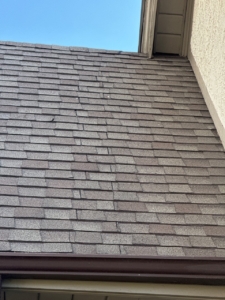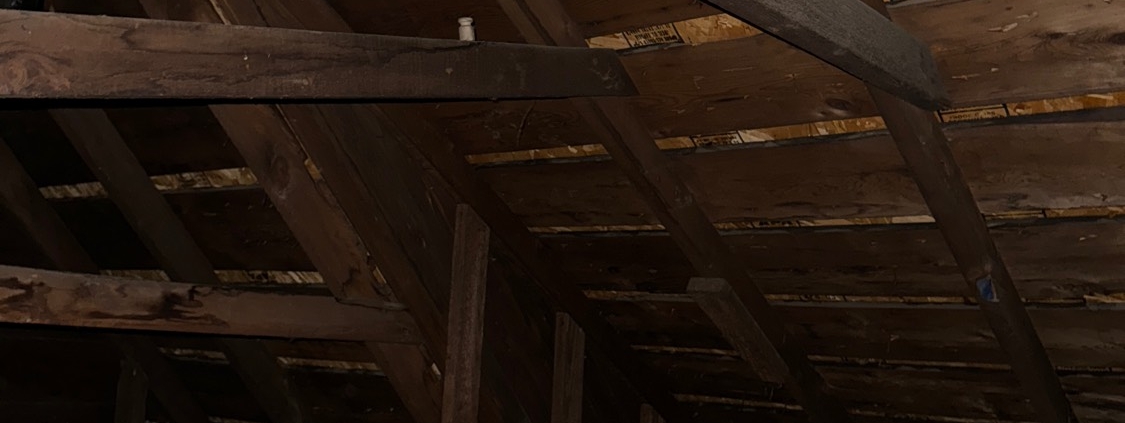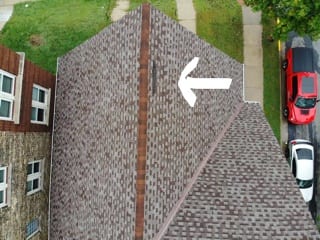Sponsored by Cornerstone Home Inspection in Hubertus WI
Introduction
A strong and stable foundation is the bedrock of any well-built structure, be it a house or a commercial building. However, foundations can face various issues over time, potentially compromising the structural integrity of a property. In this article, we will delve into the world of foundation problems and discuss the causes, inspection techniques, and the importance of hiring a professional inspector.
1. What is the number one cause of foundation problems?
Foundation problems can stem from a multitude of factors, but among them, the number one cause is moisture. Moisture-related issues can lead to foundation damage in a variety of ways. For instance, prolonged exposure to excessive moisture can cause the soil underneath a foundation to expand, leading to foundation heaving. Conversely, a lack of moisture can result in soil shrinkage, causing foundation settlement.
Improper drainage systems around a property can also contribute to foundation problems. When rainwater is not effectively diverted away from the foundation, it can seep into the soil, causing soil erosion and instability. This, in turn, can lead to cracks, uneven settling, and other foundation issues.
Additionally, tree roots can play a significant role in causing foundation problems. As trees grow, their roots can extend beneath a property’s foundation, exerting pressure and potentially causing it to shift or crack. This is especially common in regions with expansive clay soils.
2. What causes a foundation to fail inspection?
Foundation inspections are crucial to identify any existing or potential problems that may compromise the stability of a building. Several factors can lead to a foundation failing inspection:
a. Cracks and Settlement: One of the most common reasons for a failed foundation inspection is the presence of cracks in the foundation walls or floor. These cracks may be indicative of structural issues, such as settlement or heaving.
b. Uneven Foundation: An uneven foundation, where one part of the building has settled more than another, can result in an inspection failure. This condition often indicates soil-related problems or inadequate construction.
c. Moisture Damage: Water damage or moisture-related problems can lead to a failed inspection. Signs of moisture damage may include efflorescence (white, powdery substance on concrete surfaces), mold growth, or dampness in basements or crawl spaces.
d. Poor Drainage: Inadequate drainage systems around the foundation can contribute to inspection failure. Standing water near the foundation or improper slope can lead to moisture infiltration, soil erosion, and ultimately, foundation issues.
e. Structural Damage: Any signs of structural damage, such as bowed walls, leaning columns, or sagging beams, will likely result in a failed inspection. These issues can compromise the building’s stability and safety.
f. Pest Infestation: Termites and other pests can damage wooden components of the foundation, including support beams and joists. Inspectors will look for evidence of pest infestations during their evaluation.
3. How to do a foundation test on a home?
Conducting a foundation test on a home is a crucial step in identifying potential issues early and ensuring the structural integrity of the property. Here’s a general outline of how to perform a basic foundation test:
a. Visual Inspection: Begin by visually inspecting the exterior of the foundation. Look for cracks, bulges, or any signs of damage. Pay close attention to the foundation walls, corners, and areas around windows and doors.
b. Check for Unevenness: Use a level to check the floors inside the home. Sloping or uneven floors can be indicative of foundation settlement.
c. Inspect for Moisture: Check the basement or crawl space for signs of moisture. Look for water stains, mold, mildew, or standing water. Moisture-related issues can lead to foundation problems.
d. Assess Drainage: Evaluate the grading and drainage systems around the property. Ensure that water is directed away from the foundation to prevent moisture infiltration.
e. Seek Professional Inspection: While the above steps can help you identify some issues, it’s essential to hire a professional inspector for a thorough assessment. Professionals have the tools and expertise to detect hidden problems and provide a comprehensive report.
4. When should you walk away from foundation problems?
Walking away from a property with foundation problems is not a decision to be taken lightly. However, there are certain circumstances when it may be the wisest choice:
a. Severe Structural Damage: If the foundation problems are so severe that they pose a safety risk or would require extensive, costly repairs that you cannot afford, it may be best to walk away. Safety should always be a top priority.
b. Uncertainty: If the extent of the foundation damage is uncertain, and the seller or inspector cannot provide a clear assessment, it might be a red flag. Without a clear understanding of the problem, you may be taking on a significant financial risk.
c. Multiple Issues: If the foundation problems are just one of many issues with the property, and the combined cost of repairs becomes overwhelming, it may be more practical to look for a different property without as many problems.
d. Lack of Disclosure: If the seller is not forthcoming about the foundation problems or tries to hide them, it raises questions about the integrity of the transaction. In such cases, it’s wise to reconsider the purchase.
e. Legal and Insurance Concerns: Some foundation problems may lead to legal or insurance complications. For example, if the property has a history of flooding due to foundation issues, it could affect your ability to secure insurance or obtain necessary permits for renovations.
5. What do you call the person who checks the foundation of a building?
The professional responsible for inspecting the foundation of a building is typically called a “Foundation Inspector” or a “Structural Inspector.” These individuals are highly trained and certified to assess the condition of a building’s foundation and its structural components. Their primary goal is to ensure the safety and stability of the structure.
Foundation inspectors are equipped with the knowledge and tools to identify a wide range of foundation issues, including cracks, settlement, heaving, moisture problems, and structural damage. They play a crucial role in the real estate industry, helping buyers make informed decisions and assisting homeowners in maintaining their property’s structural integrity.
To become a qualified foundation inspector, individuals often undergo specialized training and certification programs. These programs cover various aspects of foundation inspection, including understanding different types of foundations (e.g., slab, crawl space, basement), soil conditions, drainage systems, and construction methods. Additionally, inspectors learn how to use specialized tools such as laser levels, moisture meters, and cameras to conduct thorough assessments.
During a foundation inspection, the inspector will carefully examine the foundation both inside and outside the property. They will assess the condition of foundation walls, floors, beams, columns, and other structural elements. If any issues are discovered, the inspector will provide a detailed report outlining the problems and recommended solutions.
6. What is considered a failed foundation?
A “failed foundation” refers to a foundation that has significant structural issues or damage that compromises its ability to support a building safely and effectively. Several conditions and signs can indicate a failed foundation:
a. Cracks: Extensive and wide cracks in the foundation walls or floor are a clear sign of foundation problems. These cracks can allow moisture infiltration and weaken the foundation’s structural integrity.
b. Settlement: When a foundation settles unevenly, causing parts of the building to sink or tilt, it is considered a failed foundation. Uneven settlement can lead to structural damage and safety hazards.
c. Bowed Walls: Foundation walls that have bowed inward or outward are a cause for concern. This bowing can be a result of soil pressure, water pressure, or other factors and can lead to further structural issues.
d. Sagging Floors: If the floors inside the building sag or slope noticeably, it can be a sign of foundation problems, especially when coupled with other indicators.
e. Moisture Damage: Extensive moisture damage in the form of mold, mildew, or rot in the basement or crawl space can suggest foundation issues. It may also indicate poor drainage or waterproofing.
f. Structural Instability: Any condition that compromises the stability of the building, such as leaning columns, beams, or walls, is a severe indication of a failed foundation.
g. Continuous Cracking and Damage: If the foundation has been repaired multiple times, and the problems keep recurring, it may be considered a failed foundation. Repeated repairs often point to underlying issues that have not been adequately addressed.
It’s important to note that not all foundation issues result in a failed foundation. Some problems can be addressed through repairs, reinforcement, or foundation underpinning. The severity and extent of the issues, as well as the cost of repairs, will determine whether a foundation is deemed “failed.”
7. Why Hire a Professional Inspector for Foundation Inspection?
Hiring a professional inspector for a foundation inspection is a wise decision with numerous benefits:
a. Expertise: Professional inspectors are trained and experienced in evaluating foundations. They have the knowledge to identify both visible and hidden issues, ensuring a thorough assessment.
b. Objective Evaluation: Inspectors provide an unbiased evaluation of the foundation’s condition. They are not emotionally attached to the property, which can help you make an informed decision.
c. Safety: A thorough foundation inspection can uncover potential safety hazards. Identifying these issues early can prevent accidents and costly repairs in the future.
d. Negotiation Power: If issues are discovered during the inspection, you can use the findings as leverage during price negotiations with the seller. This can potentially save you money on the purchase price or lead to necessary repairs being made.
e. Peace of Mind: Knowing the true condition of the foundation can provide peace of mind. It allows you to make an informed decision about whether to proceed with the purchase or seek another property.
f. Prevent Costly Repairs: Identifying foundation problems early can prevent them from escalating into major, costly issues. Timely repairs or preventive measures can save you money in the long run.
g. Comprehensive Report: Professional inspectors provide detailed reports with their findings, including photographs and recommendations for repairs or maintenance. This documentation is valuable for future reference.
h. Insurance and Lender Requirements: Some lenders and insurance companies may require a foundation inspection before approving a mortgage or providing coverage. Hiring a professional inspector ensures compliance with these requirements.
In conclusion, understanding foundation problems, their causes, and the importance of professional inspection is essential for anyone involved in buying or maintaining a property. A solid foundation is the cornerstone of a safe and durable structure, and addressing any issues promptly can save both money and peace of mind in the long run. When it comes to foundation inspections, investing in professional expertise is an investment in the safety and longevity of your home or building.
RESOURCES:
- U.S. Department of Housing and Urban Development (HUD):
- Website: https://www.hud.gov/
- HUD offers information on home inspections, including guidelines for inspecting foundations.
- Environmental Protection Agency (EPA):
- Website: https://www.epa.gov/
- The EPA provides resources on managing moisture and water-related issues that can affect foundations.
- Federal Emergency Management Agency (FEMA):
- Website: https://www.fema.gov/
- FEMA offers guidance on building codes and standards, including those related to foundations in areas prone to natural disasters.
- National Association of Home Builders (NAHB):
- Website: https://www.nahb.org/
- NAHB provides information on construction and building codes, including foundation-related topics.
- U.S. Consumer Product Safety Commission (CPSC):
- Website: https://www.cpsc.gov/
- CPSC offers safety guidelines for homes and may have resources related to foundation safety.
- U.S. Geological Survey (USGS):
- Website: https://www.usgs.gov/
- USGS provides information on soil types and geological factors that can impact foundations.
- State Building Departments:
- Depending on your location, your state’s building department website will have information on local building codes and regulations, which often include foundation standards.
- Local Municipal Websites:
- Your local city or municipality may have resources related to building permits, inspections, and zoning regulations that affect foundations.
- Occupational Safety and Health Administration (OSHA):
- Website: https://www.osha.gov/
- OSHA provides guidelines for construction safety, which can be relevant to foundation inspections and repairs.
- National Institute of Standards and Technology (NIST):
- Website: https://www.nist.gov/
- NIST offers information on building codes and standards, including those related to structural integrity.
- U.S. Army Corps of Engineers:
- Website: https://www.usace.army.mil/
- The Corps of Engineers may have information on construction and engineering standards relevant to foundations.
About Cornerstone Home Inspections:
Located in Hubertus WI, Cornerstone has been trusted by home buyers to help them make informed buying decisions. Our home inspections typically range from 2.5-3.5 hours depending on the size of the house or condo. You are invited to follow along with your inspector as they perform their inspection.
We have achieved the distinction of Certified Master Inspector as determined by the Master Inspection Certification Board. All Cornerstone Inspectors are trained to these standards and operate under a Certified Master Inspector.
Areas Served:
1. Waukesha
2. Menomonee Falls
3. Germantown
4. West Bend
5. Hartford
6. Pewaukee
7. Sussex
8. Grafton
9. Cedarburg
10. Oconomowoc
11. Watertown
Cornerstone Home Inspections include our thermal imaging of the main electrical box to add even more value to our inspections at no additional cost. Please see our thermal imaging page for more information on what thermal imaging can do.
FULLY LICENSED & INSURED
Cornerstone follows the Wisconsin State Standards of Practice. We are fully licensed by the State of Wisconsin. State license number 2355-106.
We are fully insured, carrying both general liability as well as errors & omissions insurance, including agent and broker inspector referral coverage.
Whether you’re buying or selling a home, having a professional home inspection from a leading home inspection company will give you peace of mind and assist you in a fair and smooth transaction.
WE OFFER A WIDE RANGE OF INSPECTION AND TESTING SERVICES INCLUDING:
· RESIDENTIAL HOME INSPECTIONS
· CONDO INSPECTIONS
· PRE-LISTING INSPECTIONS
· RADON CRM TESTING
· DRONE SERVICE NOW INCLUDED AT NO ADDITIONAL COST!
· ONE HOUR REPORTS
· NEW VISUAL REPORTS
· THERMAL IMAGING
NEW VISUAL REPORTS:
We now feature a computerized report that allows our inspectors to add pictures and comments to the report onsite. This type of report delivery allows for a more detailed explanation of the area of concern, giving you the knowledge to make an informed purchase decision. The computer report is then emailed directly to you and your realtor, saving precious time in the real estate transaction.
THERMAL IMAGING:
Cornerstone Home Inspections include our thermal imaging of the main electrical box to add even more value to our inspections at no additional cost. Please see our thermal imaging page for more information on what thermal imaging can do.
FULLY LICENSED & INSURED
Cornerstone follows the Wisconsin State Standards of Practice. We are fully licensed by the State of Wisconsin. State license number 2355-106.
We are fully insured, carrying both general liability as well as errors & omissions insurance, including agent and broker inspector referral coverage.
Whether you’re buying or selling a home, having a professional home inspection from a leading home inspection company will give you peace of mind and assist you in a fair and smooth transaction.
If you have any questions regarding your house, just call and we will answer it. If we can’t answer it right away, we will find the answer for you. At Cornerstone, your total satisfaction is our number one priority.
Call us today at 262-607-CSHI to book your home inspection.
Cornerstone Home Inspection
Michael Ford
262-607-2744
Hubertus, WI 53033
mike@cornerstonehi.com
https://www.cornerstonehi.com









 From Wikipedia: Knob-and-tube wiring (sometimes abbreviated K&T) is an early standardized method of
From Wikipedia: Knob-and-tube wiring (sometimes abbreviated K&T) is an early standardized method of 











